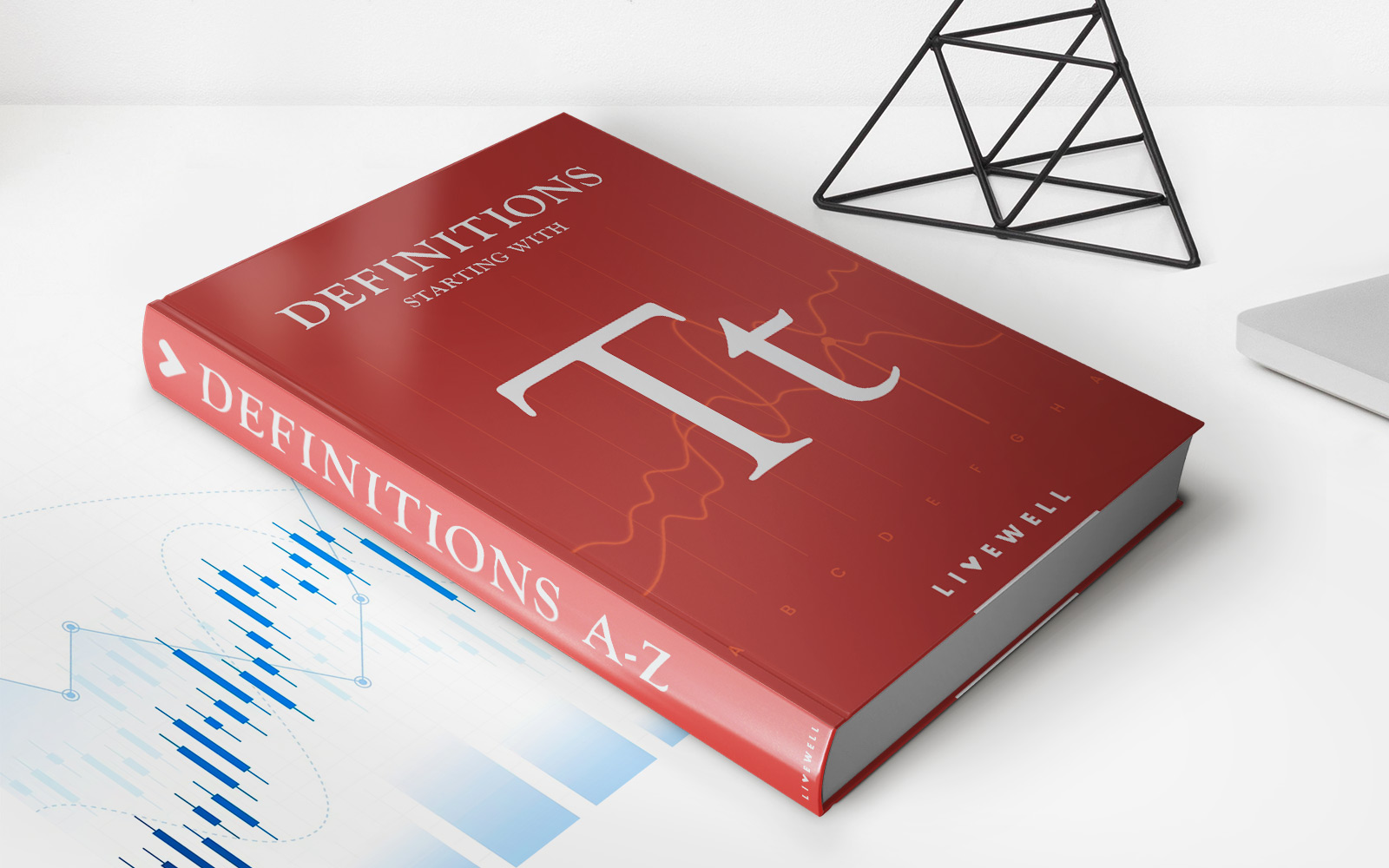Home>Finance>What Are The Examples Of Mergers And Acquisitions


Finance
What Are The Examples Of Mergers And Acquisitions
Published: February 25, 2024
Explore various examples of mergers and acquisitions in the finance industry. Learn how companies navigate these strategic moves to achieve growth and success.
(Many of the links in this article redirect to a specific reviewed product. Your purchase of these products through affiliate links helps to generate commission for LiveWell, at no extra cost. Learn more)
Table of Contents
Introduction
Introduction
Welcome to the fascinating world of mergers and acquisitions (M&A), where companies come together to create new opportunities, expand their reach, and drive growth. Mergers and acquisitions are strategic business activities that involve the consolidation of companies or assets, often resulting in a significant impact on the corporate landscape. This article will explore various types of mergers and acquisitions, providing examples and insights into how these transactions shape different industries.
As companies seek to gain a competitive edge, they may opt for mergers or acquisitions to achieve synergies, access new markets, or diversify their product offerings. These transactions can take different forms, each with its own unique characteristics and implications. By understanding the distinct types of mergers and acquisitions, we can gain valuable insights into the dynamics of corporate restructuring and the evolving business landscape.
Throughout this article, we will delve into horizontal mergers, vertical mergers, conglomerate mergers, market extension mergers, and product extension mergers, shedding light on how these transactions unfold and the strategic rationale behind them. Additionally, we will explore the impact of mergers and acquisitions in specific industries, such as technology, healthcare, and finance, providing real-world examples to illustrate the profound influence of these transactions on business ecosystems.
So, fasten your seatbelt as we embark on a journey through the dynamic world of mergers and acquisitions, uncovering the intricacies of these strategic maneuvers and their far-reaching implications.
Horizontal Merger
A horizontal merger occurs when companies operating in the same or similar industry consolidate their operations. This type of merger aims to achieve synergies by combining complementary strengths, reducing competition, and gaining a larger market share. By joining forces, companies can streamline their operations, reduce redundant costs, and enhance their competitive position within the industry.
One notable example of a horizontal merger is the merger between technology giants Dell Inc. and EMC Corporation. In 2016, Dell completed its acquisition of EMC, creating a powerhouse in the realm of enterprise technology solutions. The merger allowed Dell to expand its portfolio of products and services, particularly in the data storage and cloud computing sectors, while leveraging EMC’s expertise in enterprise solutions. This strategic move positioned the combined entity as a formidable player in the technology industry, enabling it to offer end-to-end IT solutions to a diverse range of clients.
Another prominent example of a horizontal merger is the merger between pharmaceutical companies Pfizer Inc. and Warner-Lambert. This merger, completed in 2000, brought together two leading players in the pharmaceutical industry, allowing them to pool their resources, research capabilities, and product pipelines. By consolidating their operations, Pfizer and Warner-Lambert aimed to strengthen their market position, capitalize on complementary product offerings, and achieve economies of scale in research and development.
Horizontal mergers often attract regulatory scrutiny to ensure that the consolidation does not lead to anti-competitive practices or harm consumer interests. Companies pursuing horizontal mergers must navigate antitrust regulations and demonstrate that the merger will ultimately benefit consumers through improved products, services, or cost efficiencies.
By engaging in horizontal mergers, companies can harness the power of collaboration to drive innovation, expand their market presence, and create value for their stakeholders. These mergers represent strategic maneuvers aimed at reshaping industries, fostering healthy competition, and delivering enhanced offerings to customers.
Vertical Merger
In contrast to horizontal mergers, vertical mergers involve the consolidation of companies operating at different stages of the production or distribution process. This type of merger typically occurs between a supplier and a customer or between companies involved in upstream and downstream activities within an industry. Vertical mergers are driven by the desire to streamline operations, achieve greater control over the supply chain, and enhance efficiency.
An illustrative example of a vertical merger is the acquisition of Time Warner by AT&T. This landmark merger, completed in 2018, brought together a telecommunications giant with a prominent media and entertainment conglomerate. By integrating content creation and distribution capabilities with a vast telecommunications network, AT&T aimed to offer a seamless and immersive experience to consumers, spanning from content creation to delivery through its network infrastructure.
Another notable instance of a vertical merger is the acquisition of Whole Foods Market by Amazon. This strategic move allowed Amazon to vertically integrate its e-commerce platform with a renowned brick-and-mortar retailer specializing in natural and organic foods. By combining their strengths, Amazon and Whole Foods sought to revolutionize the retail and grocery industry, offering a holistic shopping experience that seamlessly blends online convenience with physical store offerings.
Vertical mergers can present unique opportunities for companies to optimize their operations, reduce costs, and foster innovation by integrating disparate elements of the value chain. However, these mergers may also raise concerns related to market concentration and potential anti-competitive behavior, prompting regulatory scrutiny to ensure fair competition and consumer welfare.
By engaging in vertical mergers, companies strive to create synergies, enhance their value proposition, and gain a competitive edge by integrating complementary stages of the production or distribution process. These strategic alliances enable companies to fortify their market position, drive innovation, and deliver integrated solutions that resonate with evolving consumer preferences.
Conglomerate Merger
A conglomerate merger involves the union of companies that operate in unrelated business areas, diversifying their interests and creating a more expansive corporate entity. Unlike horizontal or vertical mergers, conglomerate mergers bring together companies with distinct products, services, or industry focuses. These mergers are often driven by the pursuit of diversification, risk reduction, and the expansion of the combined entity’s market presence.
An iconic example of a conglomerate merger is the acquisition of ABC by The Walt Disney Company. This strategic move allowed Disney to broaden its entertainment empire by incorporating ABC’s television network and production capabilities. By diversifying into the realm of broadcasting and media, Disney expanded its reach and solidified its position as a global entertainment powerhouse, leveraging synergies across different segments of the entertainment industry.
Another noteworthy instance of a conglomerate merger is the acquisition of National Geographic by 21st Century Fox. By bringing together a renowned media conglomerate with a leading science and exploration brand, this merger exemplified the convergence of diverse content offerings and audience engagement strategies. The combined entity aimed to capitalize on the strengths of both organizations, tapping into the vast potential of cross-platform storytelling and immersive experiences.
Conglomerate mergers can present opportunities for companies to diversify their revenue streams, leverage cross-selling opportunities, and capitalize on the strengths of disparate business units. Through these mergers, companies seek to create synergies, mitigate risks associated with industry-specific fluctuations, and explore new avenues for growth beyond their traditional domains.
While conglomerate mergers may not exhibit the same level of operational integration as horizontal or vertical mergers, they offer companies the potential to expand their market footprint, tap into new customer segments, and harness the collective capabilities of diverse business entities. By venturing into new territories and embracing a broader spectrum of business activities, conglomerate mergers enable companies to navigate evolving market dynamics and position themselves for sustained long-term success.
Market Extension Merger
A market extension merger occurs when companies operating in the same industry but in different geographic markets combine their operations. This type of merger enables companies to expand their market reach, access new customer segments, and capitalize on synergies arising from complementary market positions. By joining forces, companies can leverage their collective strengths to penetrate new territories and achieve economies of scale.
An exemplary instance of a market extension merger is the acquisition of Grupo Modelo, a Mexican brewing company, by Anheuser-Busch InBev, a global brewing giant. Through this merger, Anheuser-Busch InBev expanded its presence in the Latin American market, gaining access to Grupo Modelo’s established brands and distribution network. This strategic move allowed Anheuser-Busch InBev to extend its market reach and strengthen its position as a leading player in the global beer industry.
Another notable example of a market extension merger is the acquisition of Flipkart, an Indian e-commerce company, by Walmart, a retail powerhouse. By integrating Flipkart’s e-commerce platform and extensive customer base, Walmart ventured into the burgeoning e-commerce market in India, diversifying its global footprint and tapping into the rapidly growing Indian consumer market.
Market extension mergers offer companies the opportunity to capitalize on the untapped potential of new geographic regions, harness local expertise, and adapt their offerings to meet the unique needs of diverse markets. These mergers enable companies to achieve geographical diversification, mitigate risks associated with regional economic fluctuations, and unlock opportunities for sustained growth in previously unexplored territories.
By pursuing market extension mergers, companies can position themselves as global players, expand their customer base, and drive international expansion strategies. These mergers represent strategic maneuvers aimed at harnessing the power of geographical diversification to create value, foster innovation, and capitalize on the dynamic opportunities presented by diverse market landscapes.
Product Extension Merger
A product extension merger occurs when companies operating in the same market but offering complementary products or services join forces to expand their offerings and create a more comprehensive value proposition for customers. This type of merger allows companies to diversify their product portfolios, cross-sell to existing customers, and capitalize on the synergies arising from the integration of complementary offerings.
An illustrative example of a product extension merger is the acquisition of Pixar Animation Studios by The Walt Disney Company. Through this merger, Disney augmented its entertainment offerings by incorporating Pixar’s renowned animation capabilities and intellectual properties. The collaboration resulted in a seamless integration of storytelling prowess and technological innovation, leading to the creation of iconic animated films and expanding Disney’s appeal to diverse audience segments.
Another notable instance of a product extension merger is the acquisition of LinkedIn, a professional networking platform, by Microsoft, a technology powerhouse. By integrating LinkedIn’s professional networking and recruitment solutions with Microsoft’s suite of productivity tools and cloud services, the merger aimed to offer a holistic ecosystem for professionals, seamlessly blending career development opportunities with productivity and collaboration tools.
Product extension mergers enable companies to leverage their combined strengths to deliver enhanced value to customers, drive cross-selling opportunities, and create integrated solutions that address multifaceted consumer needs. By expanding their product portfolios through strategic mergers, companies can fortify their market position, foster innovation, and capture a broader share of customer spending.
Through product extension mergers, companies seek to harness the potential of complementary offerings, unlock new revenue streams, and position themselves as comprehensive solution providers within their respective industries. These mergers represent strategic initiatives aimed at broadening the scope of products and services, fostering customer loyalty, and driving sustained growth through a diversified value proposition.
Mergers and Acquisitions in the Technology Industry
The technology industry is renowned for its dynamic landscape, characterized by rapid innovation, disruptive trends, and fierce competition. Mergers and acquisitions (M&A) play a pivotal role in shaping the trajectory of the technology sector, driving strategic realignments, fostering innovation, and reshaping the competitive dynamics of the industry.
One notable example of a transformative merger in the technology industry is Microsoft’s acquisition of LinkedIn. This strategic move allowed Microsoft to integrate LinkedIn’s professional networking and talent acquisition capabilities with its suite of productivity tools and cloud services, creating a comprehensive ecosystem for professionals and businesses. The merger exemplified the convergence of technology and professional networking, paving the way for synergistic offerings that bridge the gap between career development and productivity solutions.
Another significant instance is the acquisition of Motorola Mobility by Google, which marked Google’s foray into the hardware segment. The merger enabled Google to leverage Motorola’s expertise in mobile devices and strengthen its position in the fiercely competitive smartphone market. This strategic move underscored the pivotal role of M&A in enabling technology companies to diversify their product portfolios and expand their market presence through strategic alliances.
Moreover, the technology industry has witnessed a surge in acquisitions aimed at fostering innovation and acquiring cutting-edge technologies. Companies often engage in “acqui-hiring,” a practice wherein they acquire smaller firms primarily to gain access to their talent pool and innovative capabilities. These talent-driven acquisitions enable technology companies to infuse fresh expertise into their organizations, drive product development, and bolster their competitive edge in a rapidly evolving technological landscape.
Furthermore, the technology industry has seen a wave of mergers and acquisitions aimed at consolidating market power and expanding into emerging domains such as artificial intelligence, cloud computing, and cybersecurity. These strategic transactions have reshaped the competitive dynamics of the industry, leading to the emergence of integrated solutions and comprehensive platforms that cater to the evolving needs of businesses and consumers.
In essence, mergers and acquisitions in the technology industry are instrumental in driving innovation, fostering strategic partnerships, and redefining the boundaries of technological capabilities. These transactions reflect the industry’s relentless pursuit of growth, adaptation to disruptive trends, and the quest to deliver transformative solutions that propel the world into the digital age.
Mergers and Acquisitions in the Healthcare Industry
The healthcare industry is undergoing profound transformations driven by technological advancements, evolving consumer expectations, and regulatory changes. Mergers and acquisitions (M&A) play a pivotal role in shaping the landscape of the healthcare sector, driving strategic realignments, enhancing patient care delivery, and fostering operational efficiencies.
One notable example of a significant merger in the healthcare industry is CVS Health’s acquisition of Aetna, a landmark transaction that brought together a leading pharmacy chain and a prominent health insurance provider. This merger aimed to create a vertically integrated healthcare company, combining pharmacy services, clinical care, and insurance offerings to deliver a more holistic and coordinated approach to healthcare delivery. The merger exemplified the convergence of healthcare services and insurance, signaling a transformative shift in the industry’s ecosystem.
Furthermore, the healthcare industry has witnessed a wave of mergers and acquisitions aimed at fostering innovation, expanding service offerings, and addressing the evolving needs of patients. Pharmaceutical companies often engage in strategic acquisitions to bolster their drug pipelines, gain access to novel therapies, or expand their presence in specific therapeutic areas. These transactions enable pharmaceutical firms to harness the potential of research and development, accelerate the delivery of life-saving medications, and address unmet medical needs.
Moreover, healthcare providers have pursued mergers and acquisitions to consolidate their operations, achieve economies of scale, and enhance patient care delivery. Hospital systems often engage in mergers to create integrated healthcare networks, expand their geographic footprint, and optimize resource allocation to better serve their communities. These mergers aim to streamline administrative functions, standardize care protocols, and improve the overall quality and accessibility of healthcare services.
Additionally, the healthcare industry has seen an influx of technology-driven acquisitions aimed at harnessing digital innovations, enhancing patient engagement, and modernizing healthcare delivery. Companies have sought to acquire health tech startups specializing in telemedicine, remote patient monitoring, and health informatics to augment their capabilities and offer more personalized, data-driven care solutions.
In essence, mergers and acquisitions in the healthcare industry reflect the sector’s pursuit of transformative partnerships, innovative care delivery models, and the integration of technology to meet the evolving needs of patients and healthcare stakeholders. These transactions underscore the industry’s commitment to driving positive outcomes, advancing medical breakthroughs, and ensuring the seamless delivery of comprehensive healthcare services.
Mergers and Acquisitions in the Financial Industry
The financial industry is characterized by dynamic market forces, regulatory complexities, and evolving consumer demands, making mergers and acquisitions (M&A) a strategic avenue for companies to fortify their market position, expand their service offerings, and drive operational efficiencies. M&A activities in the financial sector have reshaped the competitive landscape, fostered innovation, and redefined the scope of financial services.
One prominent example of a transformative merger in the financial industry is the acquisition of Merrill Lynch by Bank of America. This strategic move positioned Bank of America as a leading global financial services provider, integrating Merrill Lynch’s wealth management expertise with its banking and investment capabilities. The merger exemplified the convergence of banking and wealth management, enabling the combined entity to offer a comprehensive suite of financial solutions to clients worldwide.
Furthermore, the financial industry has witnessed a surge in technology-driven acquisitions aimed at enhancing digital capabilities, improving customer experience, and embracing fintech innovations. Traditional financial institutions have sought to acquire fintech startups specializing in payment technologies, digital banking solutions, and artificial intelligence to modernize their operations and stay ahead in the rapidly evolving digital landscape.
Moreover, the financial industry has seen strategic acquisitions aimed at expanding market reach, diversifying product portfolios, and capitalizing on synergies across different financial segments. Insurance companies have engaged in mergers to broaden their offerings, enter new markets, and enhance their risk management capabilities through strategic alliances with complementary insurance providers. These mergers have reshaped the insurance landscape, leading to the emergence of integrated insurance solutions that cater to diverse customer needs.
Additionally, the financial industry has witnessed a wave of mergers and acquisitions aimed at fostering international expansion and strengthening global market presence. Global banks and financial institutions have pursued strategic acquisitions to establish a foothold in emerging markets, tap into new customer segments, and leverage cross-border synergies to create a more interconnected and resilient financial ecosystem.
In essence, mergers and acquisitions in the financial industry underscore the sector’s pursuit of strategic partnerships, technological innovation, and the delivery of comprehensive financial solutions that meet the diverse needs of businesses and consumers. These transactions reflect the industry’s commitment to driving financial inclusion, embracing digital transformation, and navigating the complexities of a rapidly evolving global financial landscape.
Conclusion
Mergers and acquisitions (M&A) serve as catalysts for transformation across diverse industries, reshaping market landscapes, fostering innovation, and driving strategic realignments. From horizontal and vertical mergers to conglomerate, market extension, and product extension mergers, companies leverage these strategic maneuvers to create synergies, expand their market reach, and fortify their competitive positions.
Across the technology industry, M&A activities have propelled companies to embrace digital innovation, forge strategic partnerships, and redefine the boundaries of technological capabilities. The convergence of professional networking and productivity tools, the integration of hardware and software expertise, and the pursuit of talent-driven acquisitions exemplify the industry’s quest for sustained growth and relevance in the digital era.
In the healthcare sector, M&A transactions have driven the convergence of healthcare services and insurance, the pursuit of transformative partnerships, and the integration of technology to meet the evolving needs of patients and healthcare stakeholders. The industry’s commitment to fostering innovation, expanding service offerings, and optimizing care delivery has reshaped the landscape of healthcare services and propelled the industry toward a more patient-centric and technologically advanced future.
Within the financial industry, M&A activities have led to the convergence of banking and wealth management, the embrace of fintech innovations, and the pursuit of international expansion strategies. These transactions underscore the industry’s commitment to driving financial inclusion, embracing digital transformation, and navigating the complexities of a rapidly evolving global financial landscape.
As companies navigate the dynamic business environment, M&A activities will continue to play a pivotal role in shaping industries, fostering strategic partnerships, and driving transformative change. By harnessing the power of collaboration, innovation, and strategic realignment, companies can navigate market disruptions, capitalize on emerging opportunities, and create value that resonates with the evolving needs of global markets and consumers.
In conclusion, mergers and acquisitions represent more than just transactions; they embody the strategic vision, collaborative spirit, and transformative potential of businesses as they adapt to the ever-changing demands of the global economy. As industries evolve and embrace new paradigms, M&A activities will remain instrumental in driving progress, fostering innovation, and shaping the future of businesses and markets worldwide.














